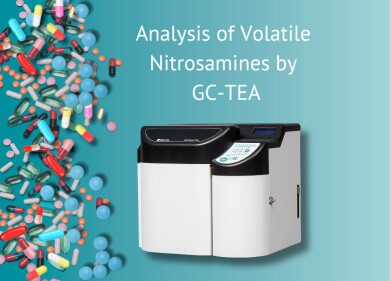Gas chromatography
What's in Kombucha? — Chromatography Tests the Tipple
Feb 05 2018
Over the past few years, one of the ‘new’ health drinks that has received publicity is kombucha. In the congested beverage market, kombucha is classed as a ‘functional beverage’ in marketing spiel. But with sales in the US estimated at over $600 million and forecast to grow at 25% — this is an important player in the drinks market.
Although there have been studies looking at the health benefits of the drink and whether it is toxic or not — not too many studies have looked at the actual composition of the drink. A recent paper in the journal Food Analytical Methods — Examination of the Varied and Changing Ethanol Content of Commercial Kombucha Products — set out to find out about one of the key ingredients in kombucha —alcohol — and used chromatography to help test the drink.
Chinese dynasty tea
Kombucha is a fermented beverage. It is thought that the drink originated in the Far East over two thousand years ago in the Tsin Dynasty where it was known as ‘The Tea of Immortality’. It reached Eastern Europe and Russia over two hundred years ago, but it was in Japan where it got the name kombucha. Legend has it that a Korean doctor called Kombu treated the Japanese emperor with cha — meaning tea — and hence a new name for the drink was found, kombucha.
It is made by adding specific bacterial strains, yeasts and sugar to tea extract. The bacteria and yeast strains are known as a SCOBY — symbiotic colony of bacteria and yeast — and nowadays they can be purchased at health food stores. Once the culture is added to the tea extract along with sugar, the brew undergoes a fermentation process which produced the finished drink and a new SCOBY.
Don’t drink tea and drive?
But alongside the vitamins, minerals and enzymes produced in the brew is a small amount of ethanol — just like all good fermentation processes. And this is where kombucha drink producers must be careful. If the alcohol is above 0.5%, the drink could be classified as an alcoholic beverage in the US. And then it is subject to a whole host of strict rules governing the sale and production of alcoholic beverages.
The paper referred to above discusses work that has been carried out to accurately measure the alcoholic content of kombucha. The scientists used a headspace gas chromatography method using an ionic liquid phase to analyse the alcohol content in kombucha samples — a method discussed in this article, A New Method for Fast Residual Solvents Analysis and Untargeted Unknown Identification Faster Sample Throughput and Shorter GC Runtimes Using GC-VUV and Static Headspace.
The researchers found that the kombucha content was significantly higher than the regulatory limit for non-alcoholic drinks. Furthermore, they found that the ethanol content increased over time as the kombucha continued fermenting in the bottles.
Be careful what tea you are drinking when you drive.
Events
May 11 2025 Vienna, Austria
May 18 2025 Tempe. AZ, USA
May 21 2025 Birmingham, UK
Jun 01 2025 Baltimore, MD, USA
Jun 15 2025 Bruges, Belgium


.jpg)











